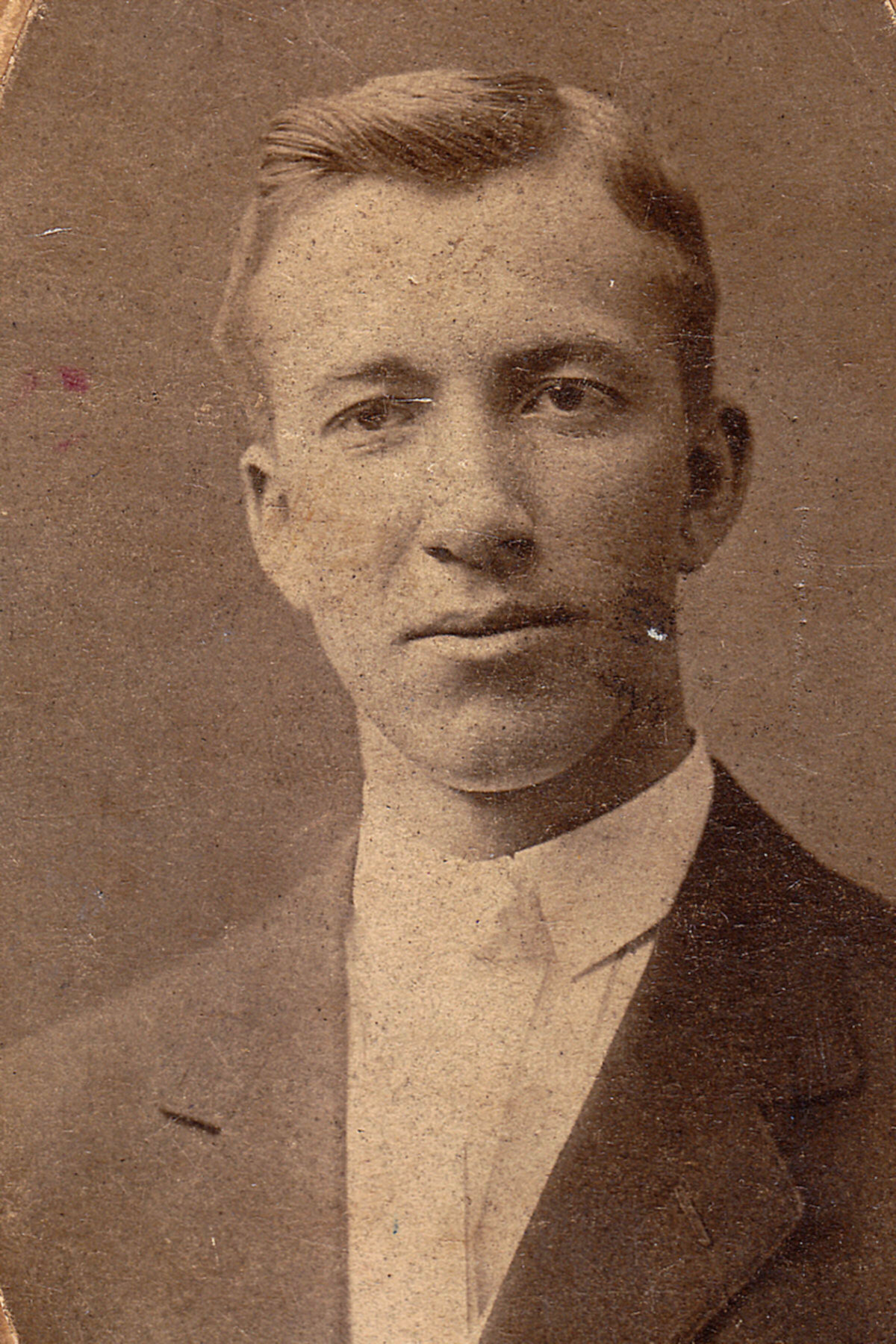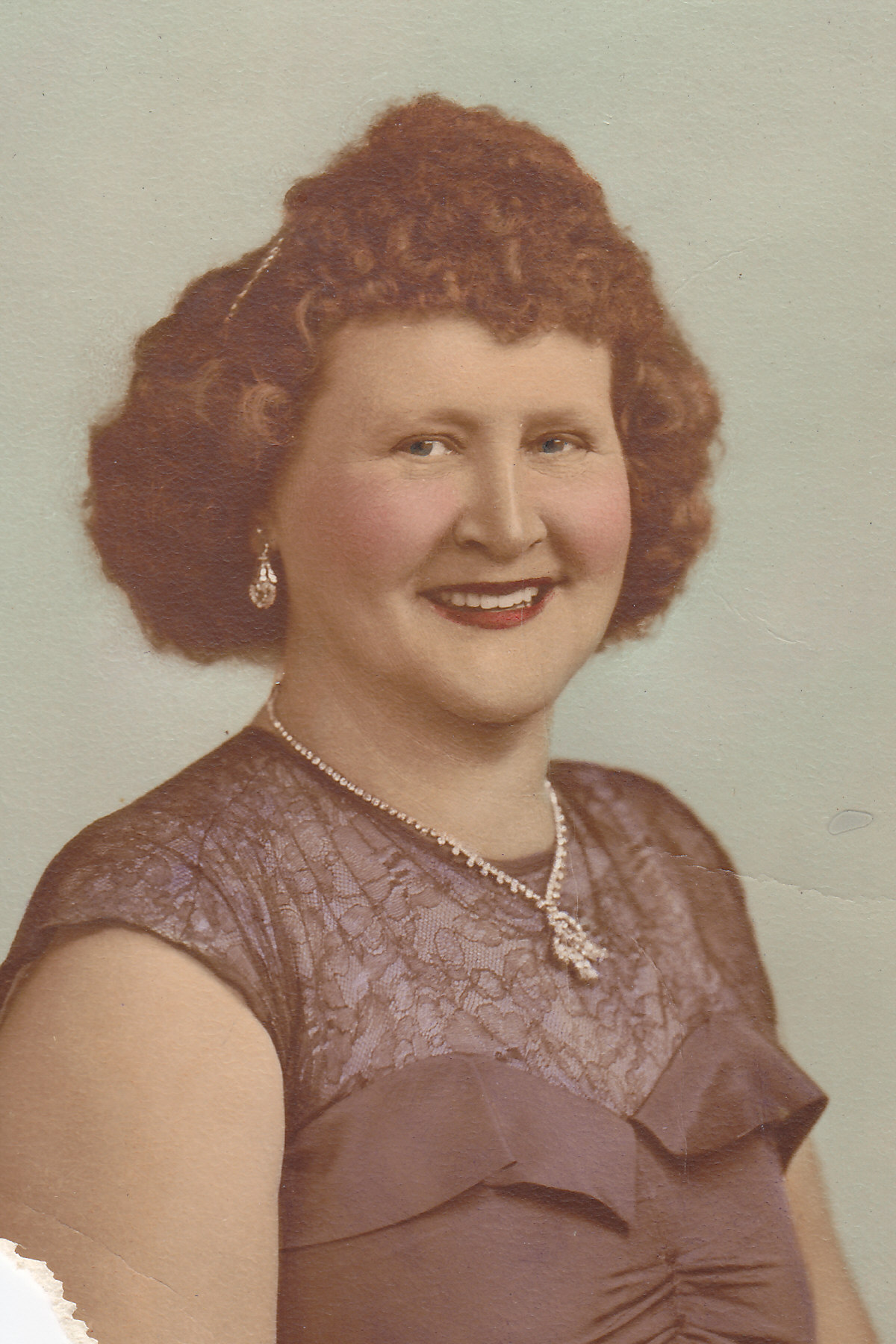Home > Family History > Hake > George Hake & Margaret Doutt

|

|
George Hake &
|
||
|
||||
|
George Hartman Hake, born August 26, 1888, began life in rural Howland Township, Trumbull County, Ohio, just east of the city of Warren. He was the son of David Henry Hake and Elizabeth “Lizzie” (Bond) Hake. I have also heard the nickname “Gussie” associated with Elizabeth. George’s father David, descended from German immigrants, was born in York County, Pennsylvania, on October 13, 1827, and migrated westward to eastern Ohio with his family (and other Hake relatives) a few years later. George’s mother Lizzie, of either English or German ancestry, was born in Scottdale, Westmoreland County, Pennsylvania, on September 17, 1855. The circumstances of how they met is unknown, but it is recorded that David and Lizzie were married in Vienna Township on December 12, 1874, when he was forty-seven and she was only nineteen. They resided in Howland Township, where George and several siblings were born and raised. This was David’s second marriage. Not much is known about George’s upbringing in rural Trumbull County. The area was known for its sprawling farms and he undoubtedly learned a thing or two about agriculture methods. It is known that his father David died in March 1896 when George was only seven years old. His mother remarried to a man with the surname of Owen, but when this happened is unknown. Could this Mr. Owen have helped raise George? Later in life his mother Lizzie moved away to Michigan with her new husband, where he died (sometime prior to 1920) and she was again remarried to a man named Dovilla Warner. When George reached adulthood he made his way to New Castle, Pennsylvania, to work on the railroad. He started working for the Baltimore & Ohio Railroad Company (B&O) in September 1909 when he was he was twenty-one years old. His occupation was that of a novice fireman, a position responsible for the operation of the boiler aboard the locomotives. He probably trained in the yards and never performed this task as a “road fireman,” actually serving aboard a traveling locomotive. Two months later he resigned from B&O and began working on the rival Pennsylvania Railroad Company (PRR) as a brakeman. A brakeman is responsible for overseeing and engaging the braking mechanisms aboard a traveling locomotive. He would spend many years as a brakeman and later as a train conductor with the PRR. Margaret Matilda Doutt, born October 15, 1897, began life in the town of Wampum in Lawrence County, Pennsylvania. She was the daughter of Joseph Henry Doutt and Mary Ellen Upperman. Margaret’s father Joseph Henry Doutt, born in Beaver County, Pennsylvania, on July 14, 1860, was descended from German Mennonite immigrants who initially resided in the Philadelphia area, but eventually migrated to western Pennsylvania. Her mother Mary Ellen Upperman was born in Baldwin Township, Allegheny County, Pennsylvania, in 1869. She was descended from Welsh and English immigrants who had settled - and worked in the thriving glass making industry - in what became known as the South Hills area near Pittsburgh. How they met is unknown, but Joseph and Mary Ellen were married in about 1885 and had at least ten children over the next twelve years. I believe they initially lived in the town of Wampum in Lawrence County, Pennsylvania, but moved to nearby Moravia in about 1905. Margaret would have grown up in the area around Wampum and Moravia, quaint little towns along the railroad tracks south of New Castle, and attended the local schools with her brothers and sisters. Her family attended the Moravia Presbyterian Church, still in operation on Route 18, and I believe her father Joseph was a minister at one time. Joseph, a democrat, was also involved with the Wampum Borough government and served in the elected office of “Inspector” in 1902. In April 1910, George Hake, at age twenty-two, was renting a room at #138 South Lafayette Street in the Mahoningtown ward of southern New Castle. Sometime within the next few years he met the teenaged Margaret Doutt, you lived in nearby Moravia. When she was only seventeen they were married in Moravia by the Reverend John C. Womer on Monday, December 7, 1914. At this same time the monumental “Great War” (later known as World War I) was raging across Europe, but the isolationist-minded United States managed to remain officially neutral at this stage. Where George and Margaret initially lived is unknown, but in July 1915 they moved to the “Miller property” in nearby Willow Grove in North Beaver Township. Willow Grove was a small, thriving rural community just south of New Castle and it was here that their first child, Alvie Eugene, was born on April 10, 1916. In November 1916, the Hake’s moved a short distance away to a farm property, located in Willow Grove and along Hickory Creek - an offshoot of the conjunction of where the Mahoning and Shenango Rivers form the Beaver River. According to an article in the New Castle News they planned to run a poultry farm at this location. The property was owned by John McMillin, a respected businessman in Mahoningtown well-known for operating the McMillin Pharmacy on North Liberty Street. On this farm several more children were born: Mary Ellen (soon known as Dorothy Mae) in February 1917, Mildred in May 1918, and Charlotte in July 1919. In April 1917, prodded on by the threat of German U-boat (submarine) attacks off the Eastern Seaboard, the U.S. government declared war on Germany. That meant that George, then age twenty-eight, would face the possibility of being inducted into the military. He underwent an examination on September 28 and a few weeks later the Lawrence County Exemption Board deemed him and seventy-six other men exempt from military service due to various reasons. George was listed under “Exempted - Physical” but I am uncertain what condition, illness, or disability led to that classification. George was spared from possible military service in war-torn France, but the farming venture along Hickory Creek was short-lived. He held a public auction at 1:30pm on Friday, October 11, 1919, and sold off such items as “6 milking cows, 1 heifer, 1 Holstein bull, 2 horses, 1 large fat hog, flock of chickens, farming implements, hay in mow, about 20 acres of corn.” Soon after this they moved and started renting a home at #24 North Cedar Street in Mahoningtown. Another son, Robert Henry, was born on North Cedar Street in September 1921. Robert and his older siblings all went on to attend schools in nearby Mount Jackson, while some of the Hake kids born in later years attended schools in Mahoningtown and New Castle. Throughout the years the family also attended services at the Madison Avenue Christian Church in Mahoningtown. The Roaring Twenties was the era of the golden age of radio, Jazz music, Flappers, large dance halls, Art Deco, Model T’s, Prohibition, speakeasy clubs, and a time of great economic prosperity. George, with a good job on the railroad, was able to take advantage of the good times. In 1925 the Hake family, with their five children in tow, purchased and moved back to the Willow Grove area and onto a farm along the northern banks of Hickory Creek. This farm, about fifty acres in size on Million Drive off Route 18, was in an area between Willow Grove and another small rural community known as Sunnyside. They area today is known as Lawrence Junction. Returning to the country life George once again got back into the poultry business. Out on this farm six more Hake children would be born: Paul Leroy in 1927, Leila Jayne in 1928, Dale Lee in 1929, George Fredrick in 1935, John Ray in 1937, and June Ilene in 1939. George must have been an extremely busy man working on the railroad, raising chickens, and maintaining a small farm and probably left the rearing of his children to his wife Margaret. I have heard that he was extremely gruff man, was more of a homebody compared to his outgoing wife, and was extremely hard on his sons. Over the years one of the Hake kids’ favorite leisure activities was playing in a swimming hole, which they called Stone Wall, located in Hickory Creek behind the property. John McMillin, who owned the farm the Hake’s lived on back in 1916-1919, had a dam built on the waterway in July 1919 to enlarge an existing natural pool. He had a bathhouse built on the site and generously allowed the Mahoningtown area residents to swim there for free. The enhanced pool was 75-feet wide by 600-feet long. The Stock Market Crash of October 1929 and the subsequent Great Depression, a long and painful period of economic decline, would have a profound effect on the Hake family. Between the Crash and the end of 1932 the income of the average American family was reduced by 40%, from about $2,300 to $1,500. The national unemployment rate jumped to almost 25% in 1933 and those that still worked did so at reduced wages. George would only work sparingly on the railroad during the 1930’s and things were undoubtedly tough on the family. George did his best to make ends meet and operated as a “sideliner beekeeper,” maintaining a few dozen bee hives (for honey bees) and selling the honey and beeswax from the harvest. George also trapped animals in the wintertime for profit. In August 1931, George’s thrice-widowed mother Lizzie passed away in Michigan and was brought home to Trumbull County, Ohio, to be buried with her first husband (and George’s father) David. The hard times slowly began to overtake George. In July 1933, a New Castle News article reveals that George was court ordered to sell off 1,300 chickens among other undisclosed property to settle some debts. Records maintained by the U.S. Railroad Retirement Board (USRRB) in Chicago, Illinois, reflect that George was laid off from the railroad for long stretches and worked for a total of only eight months between July 1931 and September 1935. He earned a paltry $250.20 in 1931! George was back to work for most of 1936 and 1937 (earning $1,873.77 in 1937) and was then laid off for nineteen straight months from December 1937 through August 1939. George’s debts must have mounted during that time because he was forced to sell off the farm sometime in the late 1930’s. When this exactly happened has proved difficult to determine, but my research so far tends to place it in mid 1937 to early 1938. His neighbors, who were very fond of him, attempted to come to his aid but there was little they could do to help him keep the property. The family soon moved into a house just north of Willow Grove at #502 Montgomery Avenue Extension on the extreme southern edge of Mahoningtown. This house sat on the southwest corner of the intersection of Routes 18 and 108, exactly where the bridge on Route 108/Mount Jackson Road currently spans the Mahoning River. As the 1940’s approached the United States was immersed in isolationism and concerned with economic recovery at home. Things changed dramatically on December 7, 1941, when Japanese forces attacked the American military fortress in and around Pearl Harbor, Hawaii. Two of the Hake boys would be called upon to serve their country during World War II. Robert and Paul both served in the U.S. Marine Corps and saw duty in the Pacific Theater against Japan. As the wartime economy soared to record levels George returned to fulltime work on the railroad. He earned $2,976.44 in 1943, $3,116.79 in 1944, and $2,765.17 in 1945. Both of the Hake boys in military service survived the war and things started to look up. In the postwar years the Hake’s always had extended family on hand for their annual Thanksgiving feast. Many of the grown Hake children also had or were starting families of their own. Eldest son Alvie even bought and lived in the house right next door to his parents. George’s railroad salary steadily increased until he made a decent $3,839.52 in 1954, which was above the national average wage of $3,155.64. On the morning of Monday, May 2, 1955, the family suffered a terrible tragedy. George, returning from a “third-trick” (night) shift run, was helping to back in a series of seventeen rail cars to the yards at Mahoningtown. George apparently fell off the lead rail car (at the back end) at about 7:00am and was run over by the remaining sixteen cars and the locomotive. He was instantly killed as his torso was severely mangled and both arms were severed at the elbow. This accident happened just south of the Mahoning Avenue railroad crossing alongside Industrial Street. Even after they pulled into the station his fellow crew members, including engineer John Schneider, fireman J. R. McKee, and brakemen J. N. Book and Frank C. Conner, were unaware of what had happened. They thought he had jumped off the train at Mahoning Avenue, as was his custom sometime, and walked to his nearby home. It was not until the next crew took the train out at 7:15am that his remains were discovered along the tracks. George, at age sixty-six, was set to retire in the near future. An open-casket viewing was held at the W. S. Caskey Funeral Home in Mahoningtown on Tuesday, May 3, from 2:00-4:00pm and 7:00-9:00pm. He was buried in a plot in Clinton Cemetery in Wampum. Margaret continued to live in the Hake home for some years. Eventually her son Paul, sometime in the mid-1960’s, moved her into the Skyview Towers (a senior citizens hi-rise apartment building) in downtown New Castle. She was not there for long and subsequently lived with several of her daughters at their homes. She soon settled with her granddaughter Judy Moses at #215 North Scott Street in New Castle. That address was the former home of her daughter Dorothy and her husband Ray Bales. Dorothy and Ray had previously separated and vacated the house. In early 1969, Margaret, who was suffering from Parkinson’s Disease and in general failing health, moved down to Texas to live with her youngest son John. John was a police officer in Houston and lived in the nearby town of Liberty. Her health quickly worsened and she took up residence in the Sharpview Nursing Home (now Manorcare Health Services - Sharpview) in June 1969. She suffered a massive stroke on Saturday, September 27, 1969, and passed away the next day at 3:20pm. Her remains were shipped home to western Pennsylvania on Monday. A viewing was held at the Caskey-Kildoo Funeral Home in Mahoningtown on Tuesday and Wednesday from 7:00-9:00pm. A funeral service, preceded over by the Reverend George A. Dawson of the Madison Avenue Christian Church, was held at the funeral home on the morning of Thursday, October 2. Afterwards, she was interred next to her husband in Clinton Cemetery.
|










